SP8DE
WHAT IS SP8DE
Sp8de is a convention for blockchain-based platform with various highlights that are basic for the developing blockchain betting industry and whose strong execution is deficient in any of the as of now existing activities in this space.

VISION
In the European Union the web based betting industry became almost 19% from the primary portion of 2015 until the main portion of 2016. The gambling club industry specifically created over US$2 billion in incomes amid this period. It is normal that until the point that 2020 this number will achieve US$2.25 billion every year speaking to around 12.5% income development [1]. In the US for the period 2015 until the point when 2016 online gambling club incomes expanded by 24.4% and are relied upon to achieve US$4 billion by 2020 [2]. The EU and the US are only a little piece of the overall gambling club industry. All inclusive, the projections of the online gambling club demonstrate that for the period 2017– 2025 the market will encounter development of around 130% achieving US$97 billion with total yearly development rate of almost 11%. Right now more than 6 million grown-ups are authoritatively taking an interest in betting exercises far and wide with projections of achieving 10 million by 2020.
Since origin, the blockchain innovation was the subject of close consideration by betting devotees. Late news from The Merkle [4] demonstrate how well known online Bitcoin wagering has progressed toward becoming. In total the bets put on online Bitcoin clubhouse in February 2017 have come to about 3 Bitcoin every moment. The cost of Bitcoin toward the finish of February was about US$1,200 while now it is US$5,900 (roughly 292% development) which implies that starting today nearly US$715 million worth of Bitcoin was bet in February alone.
The Mechanics of Spade
Spade is the new-generation blockchain-based gaming platform aimed at all the participants of contemporary casino ecosystem. We call it “new-generation” as Spade satisfies all the aforementioned conditions of a ‘proper’ blockchain casino. We build Spade on top of the blockchain called Cardano. The Cardano project itself is a monumental work that embraced the best practices and most far reaching innovations in the area of cryptocurrencies and packed them into a single state-of-art system. It is being developed and maintained by a large team comprised solely of PhDs in the field of programming and cryptography, and experienced engineers.
In what follows we will illustrate how Spade provides an environment for the design of gambling applications which are characterized with:
- Close-to-absent transaction fees and Proof-of-Stake powered scalability that is beyond the reach of any other on-chain casino protocol currently in existence;
- A mechanism to generate decentralized provenly uniform randomness at arbitrary time-spans;
- Provides rich Smart Contract functionality that allows for creativity in game design that is bounded solely by the fantasy of the developer (and the demand for the resulting product of course);
Fairness of the outcome is essential for gambling; it is the core.
Spade utilizes Cardano to design its ecosystem and thereby solves the problems normally associated with the on-chain casinos described above. Here is how:
• Transaction fees and scalability: the size of transaction fees is normally a function of the degree to which a given distributed system scales. Scalability can be defined as the relation between system resources and the number of nodes. Scalable systems gain in efficiency as new nodes join the network: BitTorrent and IOTA protocols are two prominent examples. Proof-of-Work based blockchain systems do not scale by construction: indeed, maintaining a common ledger implies every node possessing a full copy of this ledger. Without this condition, the security — most important property of such systems — is compromised. Therefore, there is no gain in efficiency when a new node joins the network. Ouroboros is a Proof-of-Stake protocol, meaning that at any given time, a trusted set of nodes maintain the integrity of the system. This protocol was shown in an experimental setting to be resistant to a handful of attacks that are known to plague other systems and are directly relevant to gambling protocols.
• Random number generation: finally, Ouroboros, the POS protocol underlying Cardano blockchain in its workings fully relies upon generating unbiased (i.e. uniformly distributed) entropy. The beauty of the idea is that the blockchain itself serves as a broadcast channel: the uniform randomness is generated on-chain! For us, this is the crucial point, so let’s elaborate on it further.
POS systems are heavily dependent on the ability to generate good-quality randomness “to inject pure entropy into the system”. Without it, the integrity of the protocol can be interrupted. This stems from the fact that if there is a way to manipulate the process of selecting an agent who is chosen to validate the next block, an adversary can bias the election process. This is the root of the infamous “Nothing-at-Stake” problem and invalidates the whole concept of POS-based distributed consensus protocols. Apart from provably random number generation, another pre-condition for the plausibility of POS protocols is that these numbers are actually delivered to everyone participating in the protocol. In other words, the delivery of uniform randomness has to be guaranteed on the protocol level. Hence, to be a valid concept, especially from a formal academic viewpoint, Ouroboros must have a mechanism for generating and broadcasting “good” randomness. Furthermore, to be scalable, the generation and verification processes must be computationally inexpensive.
Ouroboros solves these problems by embracing two well-known protocols from the field of distributed consensus: coin-tossing application of commitment schemes and verifiable secret sharing. Blending these two together produces a miracle: it creates a protocol for creating unbiased public randomness in a distributed adversarial setting with guaranteed output delivery. In layman terms, this means that Ouroboros:
a. Generates provably random numbers;
b. Guarantees that everyone will get them. Unchanged.
We will touch upon the topic of randomness again in the technical deep-dive below.
Apart from providing elegant solutions to the existential problems of on-chain casino protocols, Cardano offers a rich toolbox for solving several less critical issues:
• Flexible and finance application-tailored scripting language: those who have experience with the Bitcoin scripting language know how draconian and inflexible it is, those who spent thousands of hours grinding through Solidity (the Ethereum scripting language), know how quickly it might become overly complex. Rigidity limits the number of applications; complexity limits the set of actors who are capable to work with the language and introduces larger scope for unintended errors and unnoticed bugs. To create a truly universal platform where those with bright ideas can compete for their share in the overall pie, one needs a simpler language whereby, simplicity would not come at the expense of the scope of application. Plutus is a general purpose Smart Contract language developed by IOHK and implemented in Cardano.
The core idea is that any type of financial transaction can be decomposed into simpler ones. Therefore, all the wide variety of complex financial instruments is comprised of a much smaller set of “foundational elements” that create the entire transactional logic. Cardano is designed by matters of code and is set to follow best practices; its scripting language is tailored for financial applications: security and execution can be “extremely well understood”.
With a certain degree of abstraction, one can observe strong parallels between any financial derivative and most of the gambling applications: in essence these are just contracts between one or more parties where outcome is conditioned, in part, on a realization of a random variable. This leads us to conclude that Plutus is the best of kind natural fit for writing casino applications.
Cardano is scalable, secure, and complex yet elegant. The major takeaway is that designing a successful POS protocol requires solving the same problems that constrain the creation of provably fair on-chain casinos. With Cardano as a backbone, Spade is set to become the best of its kind.
Our claims don’t require you to blindly trust us: all the results we rely on are proven with academic rigor and can be accessed by anyone on the ever-growing library of academic papers maintained by the IOHK foundation. Our competitors can appeal to the crowd stating that their protocol is unique, efficient and practically difficult to manipulate. Believing this implies having faith in their team: all the existing projects are either work-inprogress or completed, but centralized. All the results we rely upon are established with mathematical rigor and academic formalism by those for whom developing cryptography as a science is a profession, and state of the art code is an everyday tool.
The Spade Protocol
Before delving deeper into the mechanics of the SP8DE protocol itself, we opt to give a brief overview of the Cardano blockchain and, in particular, the Ouroboros protocol that underpins it. As mentioned above, Ouroboros is the first provably secure POS protocol. All POS protocols rely heavily on the miner selection process whereby a participant is selected at random to sign a block of transactions. In essence it is a POW system without the anchor to the real world — that of processing power. A precondition for an effective POS protocol is the ability to select the next ‘miner’ (or minter using the POS jargon) randomly with the uniform probability which is proportional to one’s stake in the system. The uniform nature of the probability distribution is an essential element: if it can be skewed or biased by any protocol participant, the security is compromised rendering the protocol useless.
At the heart of Ouroboros is the so-called Follow-The-Satoshi (FTS) procedure. Its essence is simple: assuming input of the uniform randomness, FTS is guaranteed to select a stakeholder with the uniform probability proportional to the number N of coins (or satoshis) one possess relative to the total number of coins in the system. In short, FTS does the job: it possess the qualities required to make an effective POS protocol. But, as always, there is a catch: FTS assumes input of ‘proper’ randomness. But where does it come from? Before answering this question, let us lead your through the mechanics of FTS procedure itself: it will prove useful later on.
The FTS proceeds along the following steps:
a. The fresh randomness is injected into the system;
b. It is used to ‘pick’ a single satoshi, the smallest unit of account in the system, an analogy to cent for US dollars;
c. All satoshis have ids. The state of the protocol determines which user (determined by the wallet id) was the last one to hold the satoshi selected;
d. This user becomes the ‘leader’ or in other words is entitled to sign a block
Token Distribution
Sale
The entire token distribution will be 8,888,888,888 of which 3,655,555,558.4 (41.125%) will be in the form of token sale and 3,455,555,552 (38.875%) will be given as a jackpot to those who have participated in the “token sale” rounds. The rest of the tokens 1,777,777,778 (20%) will remain with the team for the purposes of marketing, advisory, and further development of the project (see the Token Proceeds Utilization section for further details on the use of the proceeds from the token distribution). From Table 2 it becomes clear that the SPX tokens received per ETH are decreasing after each sale while the tokens distributed are increasing following the PreSale stage. A soft cap of US$4,000,000 (four million) is set and the hard cap is ~ 49,033 ETH.
The token sale will take place in four rounds and the amounts in each round are as follows:
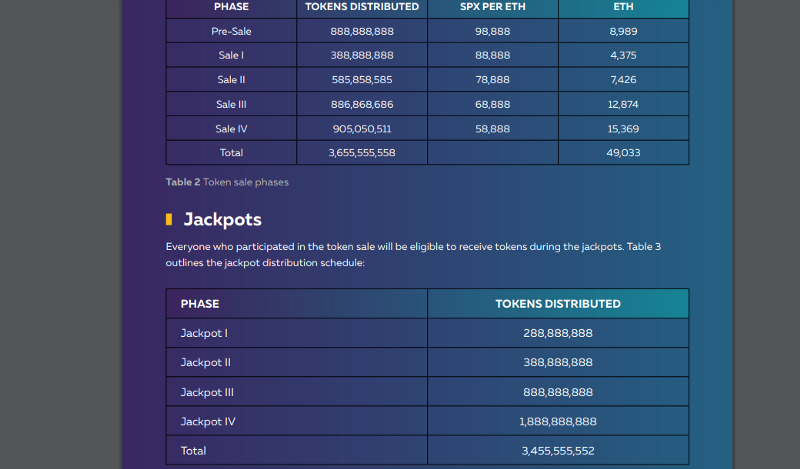
Distribution Schedule
The token distribution begins on Monday, January 08, 2018 and ends on Sunday, March 11, 2018 and is scheduled as in the manner illustrated in Table 4 below. The Pre-Sale lasts for 24 days while each Sale phase will be seven days followed by a Jackpot that is distributed entirely within a single day after every Sale. A graphical illustration of the entire SPX distribution can be seen in Figure 2 below.
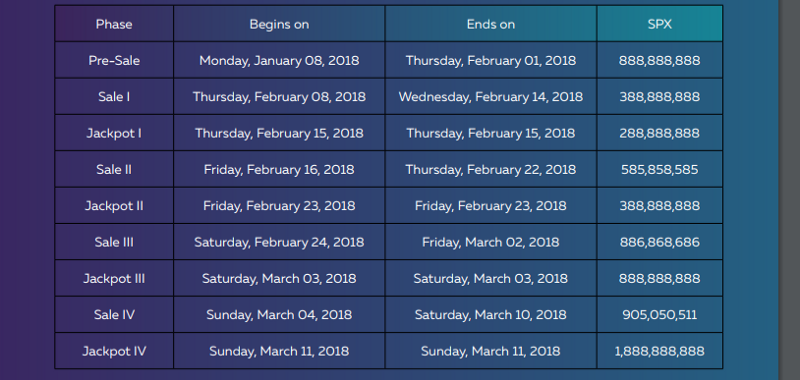
We believe that a true decentralized gaming platform has to be true to the casino spirit even in the design of its fundraising campaign.
The ICO itself is divided into five stages: the pre-sale and four sale rounds. Each of the stages differs along several important dimensions:
- the number of tokens available,
- the price of each token,
- the likelihood of winning the lot that each token brings to its holder, and
- the number of lots we have reserved for participants.
The first two of these are conventional in the industry: the earlier birds get better prices. Points 3 and 4 are unique to Spade. Each sale round after the pre-sale is followed by a ‘jackpot round’ whereby a limited number of lots are randomly distributed among the token holders. These are illustrated as four bars on the right.
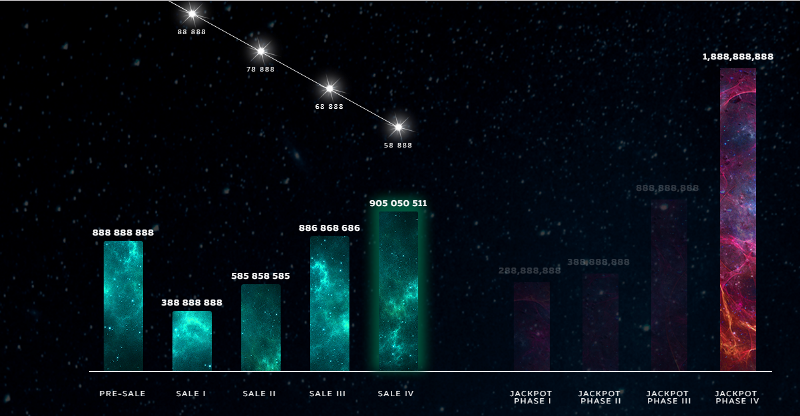

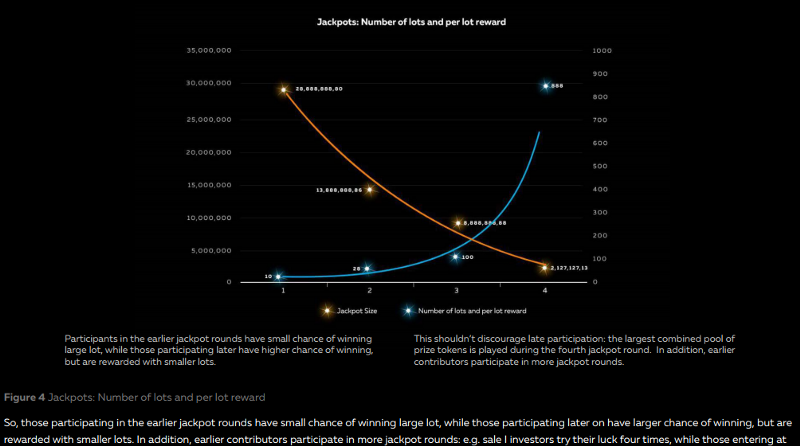
So, those participating in the earlier jackpot rounds have small chance of winning large lot, while those participating later on have larger chance of winning, but are rewarded with smaller lots. In addition, earlier contributors participate in more jackpot rounds: e.g. sale I investors try their luck four times, while those entering at sale III can only participate in two jackpots. This shouldn’t discourage late participation: the largest combined pool of prize tokens is played during the fourth jackpot round. For every lot we run a procedure which randomly selects one token out of those already issued. The holder of this token becomes the winner of the lot.
Each token being sold has a specific factor attached to it, the jackpot factor. The likelihood to win a lot is proportional to this factor. Mind, that jackpot factors are ordered: even within one sale round, earlier contribution is rewarded with more ‘powerful’ tokens. The distribution of these factors for every round is shown in the table below.
How Jackpots work?
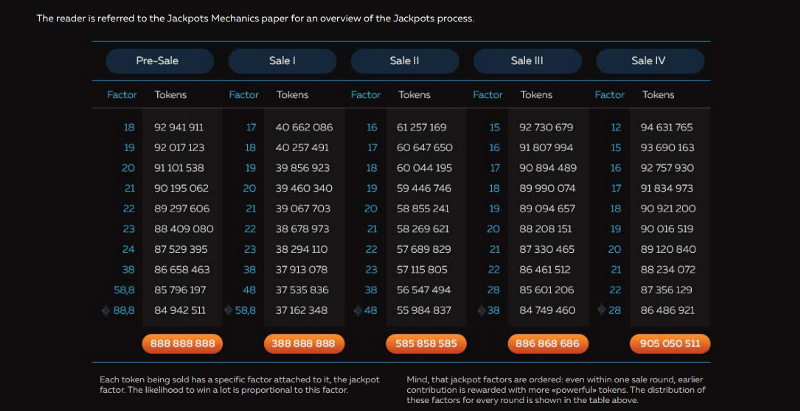
Unpurchased Tokens Allocation
There is a possibility that some part of every token Sale will remain unpurchased. As illustrated in Table 6 the majority of the tokens that remain unsold will be automatically distributed among the Jackpots, increasing
the number of tokens to be received by the participants in every Sale. If any tokens are allocated to the Spade Foundation they will be used for further development and promotion of the project.
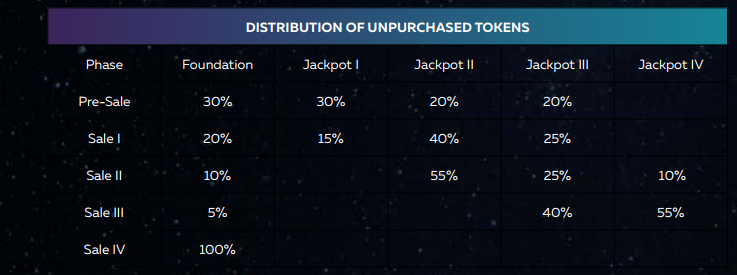
Token Proceeds Utilization
The proceeds of the token sales as well as the tokens that remain in possession of the team will be used to promote and develop the project as outlined in the Road Map section of this paper. In the figure below, we show how the proceeds will be utilized. As we have shown earlier Spade is development intense, therefore we allocate the majority of the proceeds to development and operations as we believe that proper management and highly skilled developers are in the core of the success of this project. Furthermore, when needed the tokens allocated to the Spade Foundation and the team might be used for further promotion and as part of an incentives scheme

Road Map
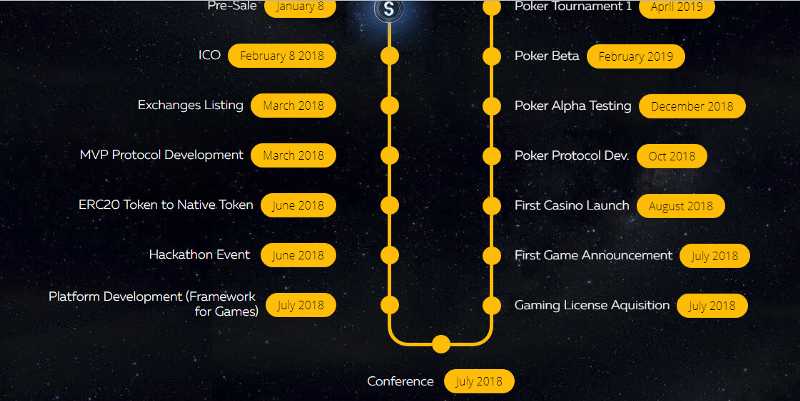
Further Information visit:
Website: https://sp8de.com/
Whitepaper: https://sp8de.com/sp8de_white_paper.pdf
Author: Brainerdpaul
BitcoinTalk profile link: https://bitcointalk.org/index.php?action=profile;u=1680409